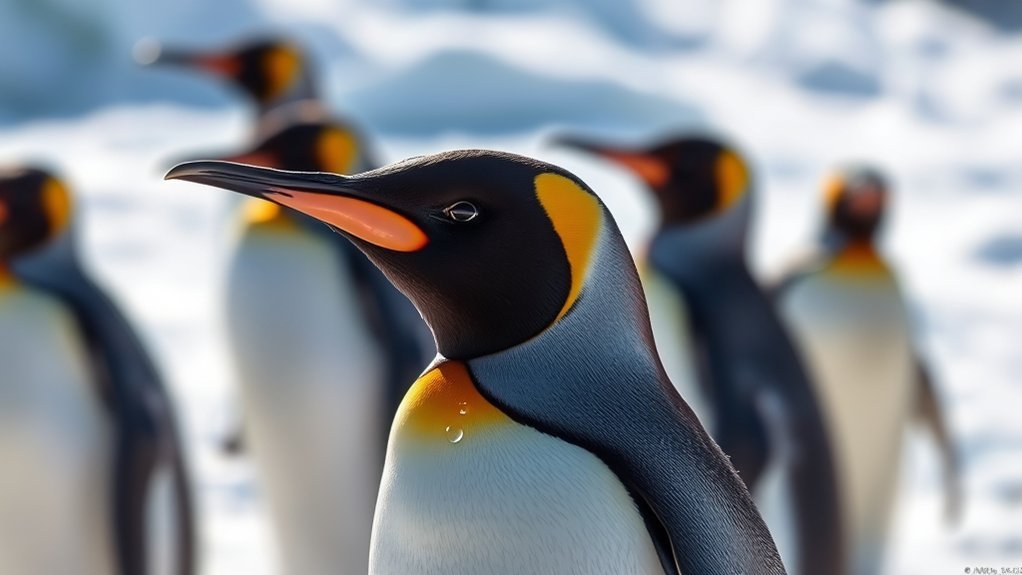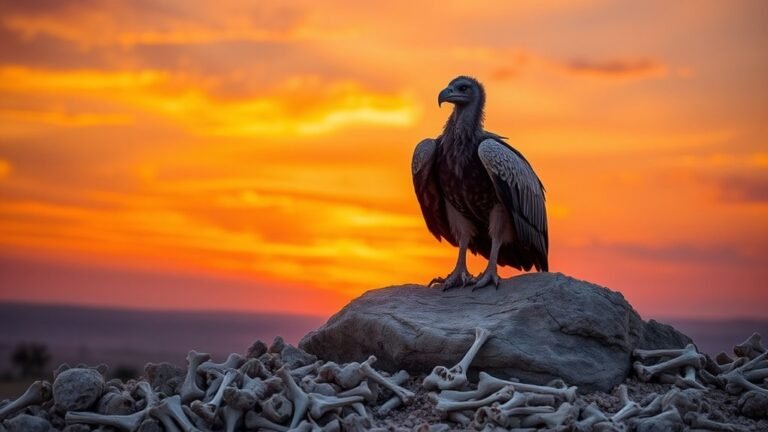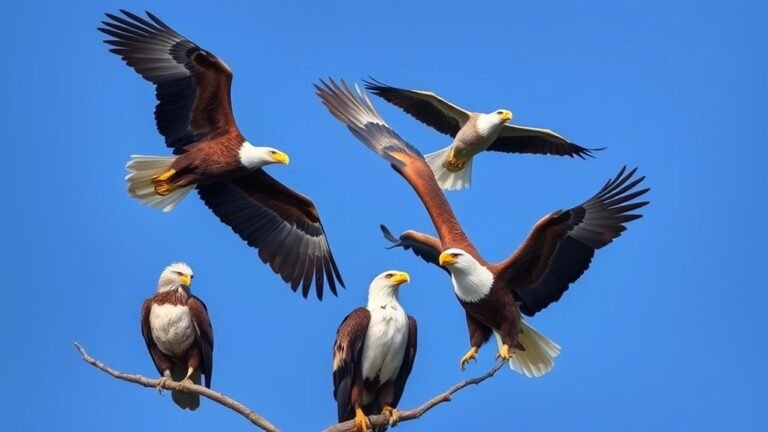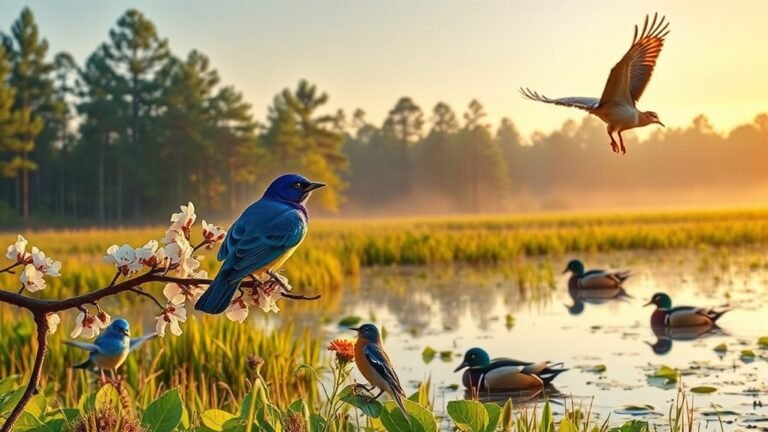Are Penguins Considered Birds? Understanding Their Classification
Are Penguins Considered Birds? Let's Find Out!
When we think about animals, we might wonder: Are penguins actually birds? Yes, they are! Penguins have feathers and they lay eggs, just like other birds. But penguins are a bit different from most birds.
One big difference is that penguins cannot fly. Instead, they are great swimmers. This makes them unique. To understand what makes a bird, we should look at what penguins can do and how they live.
So, what makes penguins stand out from other birds? They have special features that help them survive in cold water. Their bodies are shaped for swimming, and their flippers help them move quickly through the ocean.
In summary, penguins are birds because of their feathers and eggs. Their ability to swim and their lifestyle make them special. Understanding these facts can help us appreciate penguins and other birds better!
A Quick Overview
Penguins are birds because they belong to the class called Aves. They have feathers and beaks, just like other birds. Penguins are warm-blooded, which helps them stay warm in cold places.
Even though penguins cannot fly, they have wings. These wings are special. They have turned into flippers that help them swim very well in the water.
Penguins have families. They lay eggs and take care of their chicks in groups. This is similar to what many other birds do.
In their history, penguins changed a lot to live in the water. This shows that they are indeed birds, even if they swim instead of fly. Penguins are unique and fascinating!
The Definition of Birds

Birds are warm-blooded animals in the class Aves. They've feathers, beaks, and special bones that help them fly. These features make birds stand out from other animals. Birds can live in many different places because they adapt well to their surroundings.
Scientists group birds into different orders and families. They do this based on things birds share, like their size, what they eat, and where they live. This helps us understand how different bird species are related.
Learning about birds is fun and shows us how they change and grow over time. By knowing more about birds, we can join a big community that enjoys their beauty and diversity.
Birds are truly amazing creatures!
The Uniqueness of Penguins

Penguins are different from other birds. They can't fly, but they're great swimmers. Their bodies are shaped like torpedoes, and they've wings that act like flippers. This helps them swim fast in cold water.
Each penguin species has a unique personality. Some penguins are playful and curious. Others are shy and quiet. These different personalities help them create strong groups. They live in colonies, where they make friends and help each other raise their young.
Watching penguins interact can be fun and interesting. You can see how they work together and build friendships. This shows us how important social life is for their survival.
Penguins give us a special look at the different ways animals behave in nature.
Evolutionary History of Penguins
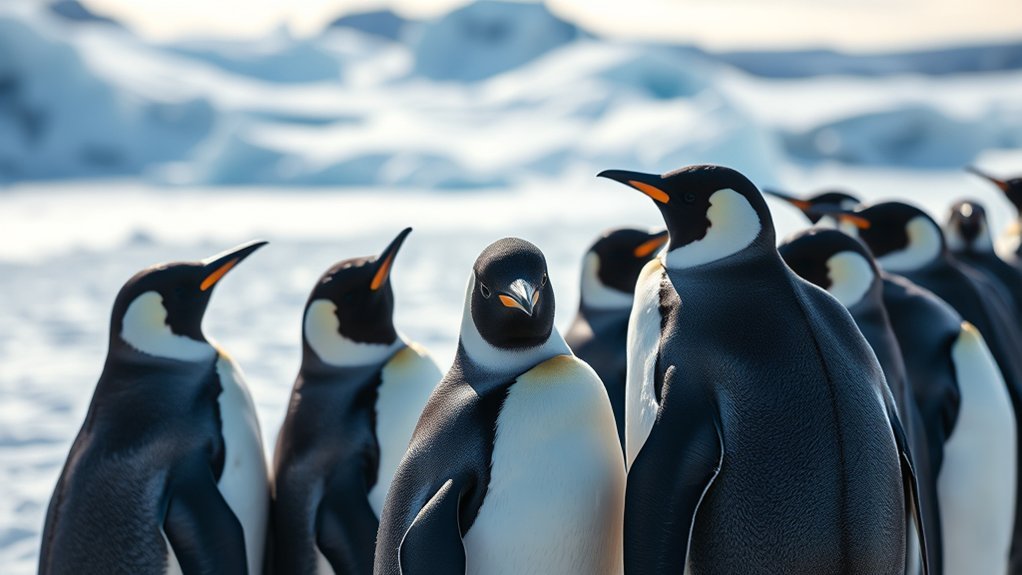
Penguins have a long story that goes back about 60 million years. They started from birds that could fly. At first, their ancestors could glide in the air, but over time, they became really good at swimming.
Fossils show us that early penguins were different from the ones we see today. They went through many changes, which gave them the special traits they've now. Scientists are still studying penguins to learn more about their past.
This history shows us how penguins adapted to their environment. It helps us appreciate how important penguins are to our planet's diversity.
Knowing about their origins gives us a bigger picture of how animals survive and change over time. Penguins aren't just cute; they're a big part of our natural world!
Penguins' Physical Adaptations
Penguins have special body features that help them live in cold water. Their bodies are shaped like torpedoes, which makes it easier for them to swim. They've a thick layer of fat, called blubber, that keeps them warm in freezing temperatures. Their feathers are close to their bodies and keep them dry.
Instead of regular wings, penguins have flippers. These flippers help them swim quickly and catch their food. Their bones are strong and heavy, which helps them dive deep into the water without floating back up easily.
All these features help penguins survive in tough climates. They've adapted to live well in some of the coldest places on Earth. By learning about these traits, you can see how penguins fit into nature and thrive in their habitats.
Flightlessness: Nature's Design
Many birds fly high in the sky, but penguins are different. They've changed to live in the water. Their lack of flight isn't a problem; it's a smart choice based on where they live.
Instead of wings to help them fly, penguins have short, flipper-like wings that are great for swimming. These special wings help penguins move quickly in the water. They swim to catch fish and avoid danger. Not flying gives penguins extra energy, which helps them stay warm in cold water.
When you look at how penguins swim, you can see how nature creates different ways for animals to live in their homes. Flightlessness in penguins shows us how life can adapt and thrive in special places.
Penguins and Their Habitat
Penguins are amazing birds that live in very cold places, mostly in Antarctica. These icy homes help keep them safe from predators and provide good spots for them to raise their young. The snow and ice are important, but penguins also need the ocean. The ocean is filled with food like krill and fish, which penguins eat to stay strong and healthy.
Penguins build their nests on land, but they depend on the rich waters around them to find food. The balance between where they live and where they hunt is key to their life.
Learning about how penguins survive in their habitats shows us why we must protect these special places. Keeping their environment safe helps them thrive.
Penguins in the Avian Classification System
Penguins are interesting birds in the avian classification system. They're part of the Spheniscidae family and belong to the Sphenisciformes order. This shows they've a special place in bird families.
Penguins look different from most birds. They've flippers instead of wings, which helps them swim well in water.
Their bodies are smooth and their bones are heavy. These features help them dive deep underwater.
Penguins still have some traits that are like other birds, such as feathers and laying eggs. However, they're very different from birds that can fly.
Learning about these differences helps us understand where penguins fit in with other birds. It also shows us how unique they're while still being part of the bird family.
Behavioral Traits of Penguins
Penguins have interesting behaviors that help them survive in tough places. They live in big groups called colonies, which can have thousands of penguins. These groups help protect them from predators and bad weather. Being in a colony gives penguins a sense of belonging, which is important for their happiness.
When it comes to finding a mate, males make special sounds and show off to attract females. This is part of their mating dance. Penguins also form strong pairs, and they often come back to the same partner each season. This shows how loyal they're to each other.
Watching penguins and their social behaviors teaches us a lot about how they live and thrive. They're social animals and show great strength in their communities.
Understanding these traits makes us appreciate penguins more as caring and strong creatures.
Penguins' Diet and Feeding Habits
Penguins live in groups called colonies, and these groups help them find food more efficiently. Penguins mainly eat krill, small fish, and squid. They catch their food using interesting hunting methods.
When penguins go foraging, they sometimes dive deep into the water. They often work together to catch fish, which increases their chances of success. Group hunting also helps them bond and build friendships within the colony.
By studying how penguins hunt, we see how they adjust their eating habits based on their environment. This adaptation helps them stay fed and keeps their community strong.
Learning about these behaviors makes us admire these amazing birds even more!
The Role of Penguins in Ecosystems
Penguins are important animals in the ocean. They're at the top of the food chain, which means they help keep other animal populations balanced. Here's how they do it:
- Keeping Fish Populations Healthy: Penguins eat fish and other marine animals. By doing this, they help control how many fish are in the water.
- Helping the Ocean Grow: Penguins poop, and their guano adds good nutrients to the water. This helps tiny plants called plankton grow, which lots of other sea animals need to survive.
- Choosing Their Food: Penguins eat certain types of fish. When they do this, they help decide which fish are most common in the water.
- Telling Us About Ocean Health: If penguin numbers change, it can mean something is happening in the ocean. Scientists watch penguin populations to learn about the health of the ocean.
In short, penguins are more than just cute animals. They play a big role in keeping the ocean healthy and balanced!
Conservation Status of Penguins
Many penguin species are in trouble. Climate change, habitat loss, and overfishing put them at risk. These problems can make it hard for penguins to survive. We all need to care about this issue.
To help penguins, we need to protect their homes. This means keeping their breeding and feeding areas safe. If we don't act now, we might see fewer penguins and less diversity in nature.
You can help by choosing sustainable seafood. This means supporting fishing practices that don't harm penguin food sources. Joining local efforts to fight climate change can also make a difference.
When you understand these issues, you can be part of a movement that works to protect penguins and their homes for the future.
Let's come together to make sure these amazing birds stay safe!
Frequently Asked Questions
Can Penguins Be Found in Environments Other Than Antarctica?
Yes, penguins can live in places other than Antarctica. While we often think of them in cold areas, some types of penguins go to warmer coasts. This shows that penguins can adapt and survive in different climates. They have smart ways to find food and keep safe, no matter the weather. Isn't that cool?
How Do Penguins Communicate With Each Other?
Penguins are great at talking to each other! They use different sounds to share important messages. These sounds help them connect with their friends in the colony and work together to stay safe. For example, when a penguin wants to find its mate or call out to a chick, it makes specific calls.
Penguins also use body language, like waving their wings or moving closer to each other. This helps them show how they feel. When they gather in groups, they can easily communicate about food, danger, or playing.
Do Penguins Have Any Natural Predators?
Yes, penguins have natural predators. Some of their main threats are seals and big birds like skuas. These animals hunt penguins and can make it hard for penguins to survive in the wild. It is important to understand these threats to help protect penguins and keep their habitats safe.
How Long Do Penguins Usually Live in the Wild?
In the wild, penguins usually live for about 15 to 20 years. This can change a bit based on the type of penguin and where they live. Their life can be affected by things like predators that hunt them, how much food they can find, and how good their living conditions are. So, while they can live a long time, many factors play a role in their survival.
What Adaptations Help Penguins Survive in Cold Climates?
Penguins live in really cold places, and they have special ways to keep warm. One way they stay warm is with their feathers. Penguins have lots of fluffy feathers that trap heat close to their bodies.
Another way they stay warm is because they have a thick layer of blubber. Blubber is a bit like a pillow made of fat. It helps keep their body heat inside, even when it's super cold outside.
These two things, feathers and blubber, work together to help penguins stay cozy. So, even when the wind is icy and the ground is covered in snow, penguins can stay warm and safe!

Luna is the passionate founder and author of Birds and You, a website dedicated to sharing her love for birds with fellow enthusiasts. Through her engaging articles and guides, she aims to educate and inspire others to explore the fascinating world of birds. When she’s not writing, you can find Luna observing birds in their natural habitats or sharing beautiful bird photography on Pinterest. Join her on this journey to celebrate and protect our feathered friends!

